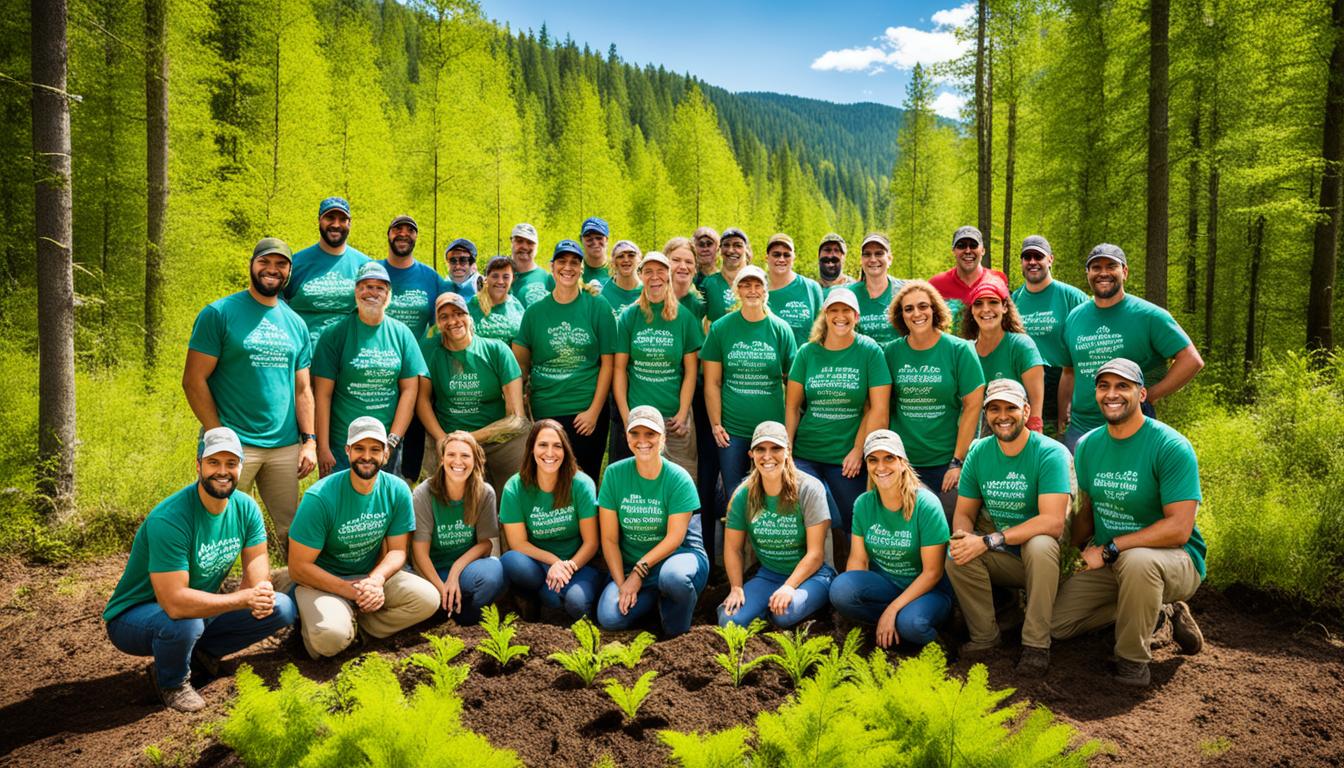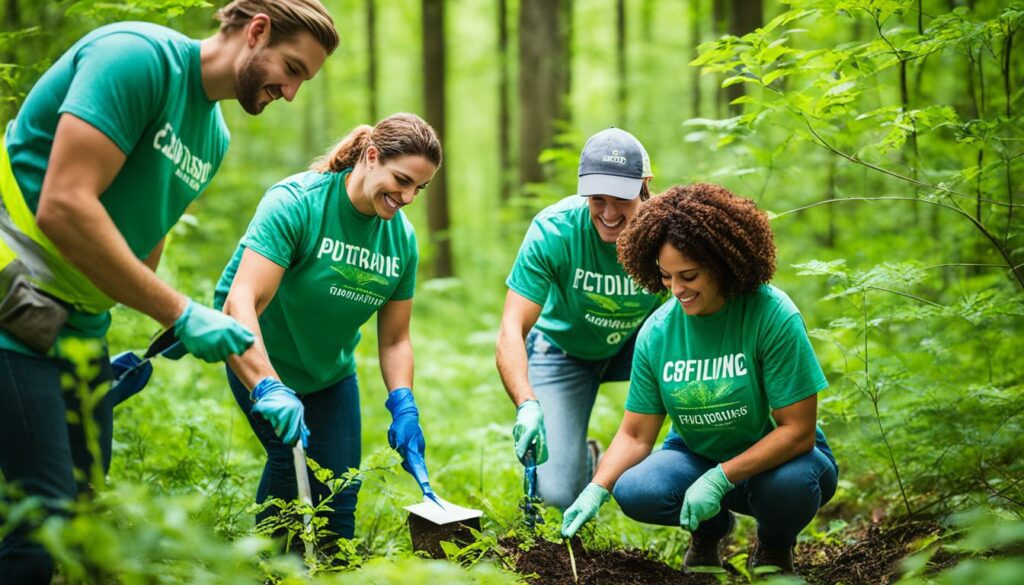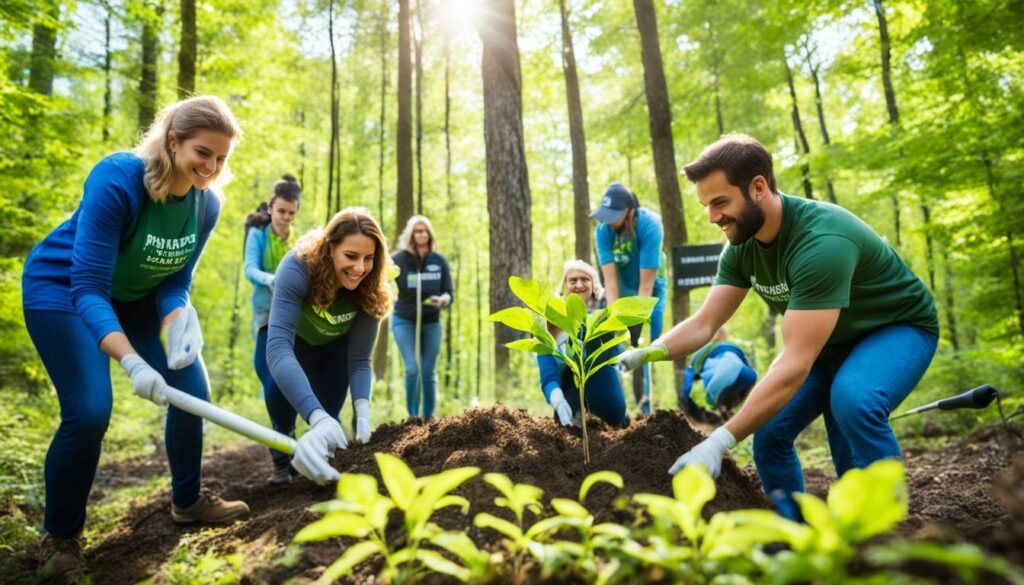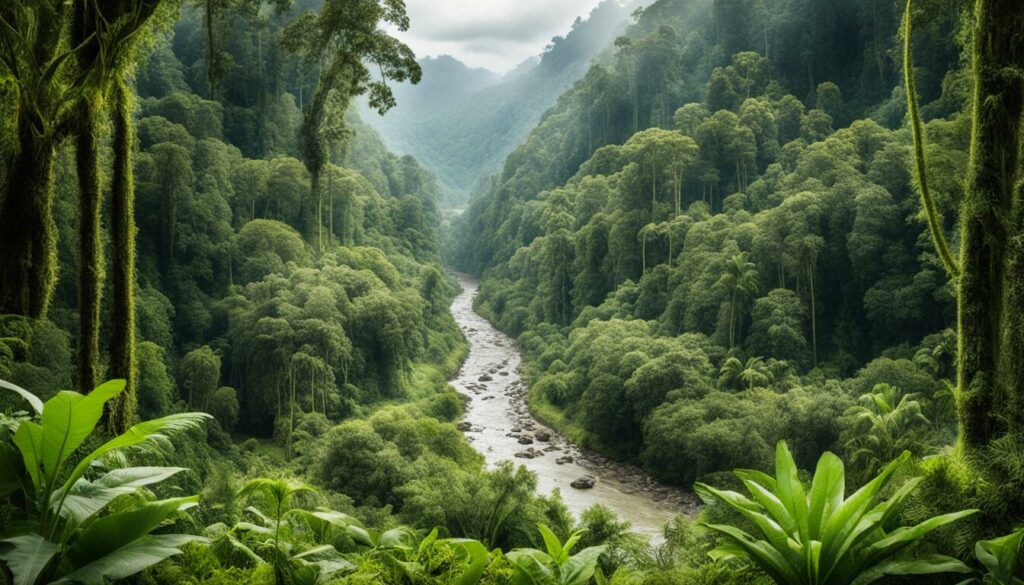Menu

Only 10% of biodiversity data is in digital form. This fact shows the urgent need for better data management in biodiversity conservation. Italian national parks started improving data management in 2013, working together. They use data that goes as far back as 1945. Protected areas are key for keeping biodiversity safe. But they face more challenges than academic researchers. They must handle all kinds of data, from surveys to molecular details. And they often have fewer resources.
LifeWatch ERIC and OpenAIRE are making big steps to boost biodiversity. They are pushing forward with Open Science and using FAIR principles. FAIR means data should be findable, accessible, interoperable, and reusable. This effort aims to make research more visible and easier to find. LifeWatch ERIC wants to make it simple for anyone to access biodiversity information with just one click. They hope this will lead to better tools for researchers to share their work.
The European Open Science Cloud (EOSC) is backing this push with several project teams. These include EOSC-FUTURE, FAIR-IMPACT, BioDT, and OpenAIRE Nexus. These projects all aim to offer lasting solutions to help with research, including biodiversity conservation. They believe that working together to improve biodiversity efforts is key to a sustainable future. It’s all about making sure we’re equipped with the tools and knowledge needed to look after our planet’s ecosystems.
Biodiversity does more than save different species. It keeps ecosystems lively, which is key for fighting climate change and keeping the planet clean. The Center for Biodiversity and Conservation shows how important human culture is to this big picture. It connects us with our world deeply.
Diverse life forms bring us food, medicine, and do many important jobs in our environment. Scientists use high-tech tools like drones and machine learning to study nature. This info is vital for those making plans to protect our world.
Programs in places like Vietnam help experts learn to save biodiversity. But there are major problems too, like losing natural homes and the effects of climate change. We need better rules for the environment to beat these issues.
Creating over 100,000 safe areas and fixing damaged lands has helped a lot. But many countries face a lack of recent information on biodiversity. The UN Biodiversity Lab 2.0 is a good sign as it uses maps to help nature and people together.
The GEODE lab’s new ways of mapping with planes and clever machines help too. They check on untouched forests in hot spots like the rainforests. Their work is key for saving these important places for everyone.
Having many different plants and animals is vital for the Earth and us. It helps the world run well, keeps it strong, and even makes us feel good. Dealing with our natural resources needs teams of experts working together. This way, we can solve problems with nature and the climate and find real ways to make things better.
But when we don’t do things right, like putting trees in the wrong places in the UK, it can cause big problems. We must care well for our many kinds of life to keep our world safe for the future.
The fight against biodiversity and climate issues needs strong partnerships. These collaborations go beyond borders and organisations, bringing together skills and resources. A great example is the UN Biodiversity Lab 2.0, which uses NASA’s support to improve how it uses space data.

The GEODE lab stands out for its work with different bodies to track forest health in tropical areas. It focuses on forests that see little human impact, aiming to protect them. With tools like Google Earth Engine, they published their findings in a top journal.
In places like Colombia, Ecuador, and Peru, the GEODE lab focuses on forests by water sources. These areas are key for keeping water clean and preventing floods. The work of Ivan Gonzalez, studying deforestation with satellite images, is crucial in these efforts.
These partnerships help countries follow plans for better biodiversity, linked to bigger goals. The World Economic Forum’s report sees losing biodiversity as a major global risk. This adds weight to the need for these joint efforts.
Working together, local groups, officials, and companies can tackle biodiversity loss well. They create solutions that fight both climate change and protect nature. Businesses and groups for nature care help in sustainable ways of making things.
The EU’s We Value Nature campaign shows Europe’s commitment to nature. Projects in Indonesia, like APRIL and Sintas, show how we can save wildcats by working together. Even efforts to improve parks in Italy with better data have big results.
Efforts to protect our planet’s biodiversity are key. They also help keep the natural world in balance. Strategies such as protected areas, national policies, and local projects play a huge role. But, their success varies, making it vital to know about each method.
Protected areas are crucial for saving important habitats and animals. They are key for keeping our planet diverse. Unfortunately, some of these efforts face challenges. Take the warming Arctic, for example. It’s heating up faster than the rest of the world. This puts its unique species and ecosystems at risk.
The rules and plans countries make can really help biodiversity. Strong policies can protect nature and lessen the risks of climate change. But, not all policies work the way they should. Sometimes, big projects or weak laws can cause harm. There are great examples too. The ITTO-CBD Collaborative Initiative, with 13 million USD, aids 23 tropical countries. It boosts forest care and helps local people better their lives.
Getting local communities involved is often the key to successful conservation. By using local knowledge and effort, projects can be very effective. In the Arctic, for example, different communities are working together. They’re doing things like listening for beluga sounds and protecting wild spaces. Their goal is to save more of our oceans by 2030.
Here is an overview of the various conservation initiatives:
| Region | Project | Focus | Outcome |
|---|---|---|---|
| Arctic | ArcNet | Resilience and biodiversity | Ensures ecosystem protection |
| Fiji | Mangrove Restoration | 130 hectares restored | Enhanced coastal protection |
| Central Africa | Forestry Education | Training for 400+ foresters | Improved forest management |
| Peru | Mangrove Expansion | Increase by 700,000 hectares | Boosted biodiversity |
| East Greenland | Sustainable Tourism | Tour operator support | Promoted eco-friendly tourism |
Wildlife preservation projects have achieved great success by working together. This includes bringing back endangered species and conserving areas that span borders. Many groups join forces, like governments, NGOs, and local people, to make these projects happen. We will explore some exciting projects where working together has made a real difference.
The comeback of the bald eagle highlights the success of these partnerships. In just 50 years, it moved from endangered to not threatened. This journey shows the importance of protecting habitats and running breeding schemes. These actions saved a whole species.

Another victory is the story of the American alligator. It was taken off the endangered list only after 20 years. This success points to the impact of focused conservation efforts. Now, the whooping crane has over 500 birds, showing the power of support under the ESA. Such achievements show how we can save species through joint efforts.
International projects highlight the success of working together across borders. The first major elephant survey in Africa’s KAZA area is a great example. This vast project involved five African countries and covered 106 million acres. It aimed to help elephants by improving their habitat and their freedom to move.
In India, 13 nations are aiming to double the tiger population by 2022. Backing this goal, India has seen its tiger numbers grow by a third since 2015. Nepal also saw its tigers nearly triple. These remarkable achievements point to the benefits of worldwide cooperation in tiger protection.
These stories show how united efforts are bringing back lost nature. By focusing on species at risk and working together across borders, the results are clear. More species survive, ecosystems are healthier, and we save our planet’s rich biodiversity.
Data is key in making ecosystem restoration projects work well. With over eight billion people in the world by 2022, we need to look after the Earth’s natural resources more than ever. The task is huge, with many groups aiming to fix 68 million hectares of land and coastlines.
Handling data in nature projects is a big deal. In Italian Alpine parks, messing up data has hurt their work. Getting data right is tough but very important for projects to do well.
New tech is a game-changer for the environment. It lets us watch over nature closely and see what works best to save it. Even data centres, which normally harm the environment, can help by being more eco-friendly.
Data centres can do more for nature. They can help rebuild connections between different plants and animals. This is essential for fighting climate change. They are working on places from deserts to the deep sea, showing how vital good data is for all types of nature.
Using data well with new tech is critical for these nature projects to go right. It helps keep wildlife safe and makes the Earth better for everyone. This way, we can handle the needs of a growing world while keeping our planet healthy.
Improving biodiversity depends on strong, team efforts. Since 2013, the Italian national parks’ data management project has shown the way. It has brought together data from before 1945 in the Alpine Biodiversity Project. This shows how important shared, long-term monitoring is.

To really make a difference in biodiversity, we need to follow the best practices. Being clear, working with different experts, and sharing the same goal are keys to success. The way the Italian Alpine parks work together to manage their data sets a great example. It shows how teaming up can create a stronger impact.
Right now, only about 10% of biodiversity data is digital. This shows how vital it is to share data more. Proper data handling helps in making better decisions and plans. It also means investing in educating more people in biodiversity. This can make efforts to restore ecosystems go smoother.
Coming together and learning from the best can help in better conservation. New and smart ways, like managing data better and working across fields, guide us. They push us to find smarter, longer-lasting ways to safeguard our planet’s biodiversity.
In the last 50 years, the world’s population has more than doubled. It has grown from 3.9 billion to 8 billion. This growth really impacts our planet. So, it’s key that we work together. Governments, businesses, and civil groups must team up. By doing this, we can take on the big environmental issues.
A big need for natural goods proves we must act fast. The illegal trade in wild things like trees and fish makes $199 billion every year. This shows how urgent it is to make green partnerships.
I can’t stress enough how important it is to team up for nature. The EU and others have put up £50 million for a key project. This project works on saving plant and animal life and making sure people have enough food in Africa, the Caribbean, and the Pacific.
There are now digital ways to connect and work together on big issues. With over half the world online, these efforts can really go far. This also means more people can get involved in finding answers to our environmental problems.
The UN joining forces with WhatsApp in 2022 to talk about green efforts shows how much we can do together. It got millions talking and working towards a better future for the planet. This blend of technology and teamwork is very promising.
Last but not least, working together is crucial for our future. Bad ways of hunting and cutting down trees harm many plant and animal species. Over 1,300 mammals and 12% of tree species are in danger. We need to act as one to protect our world. By doing this, we all share the job of making a better, greener place for everyone.
When we work together to protect species, the results are better. Teams from different places combine their strengths. This way, they save money and share what they know to make a bigger difference.
Working together this way means we don’t do the same things twice. It helps us use our resources well. This is how we can fight the big problems our planet’s life faces more effectively.

Keeping marine life safe means teaming up internationally. This helps make big areas, called marine protected areas, where animals can live undisturbed. Such efforts also ensure that rules on protecting these areas are the same everywhere.
Helping forests goes beyond conservation groups. It needs help from businesses, governments, and NGOs. They help use resources wisely and support the local people who rely on the forests.
When people from all walks of life come together, we can do amazing things. Protecting our planet’s life becomes more successful. This approach helps everyone understand better, share what they have, and keep getting better. It fits with our goal to look after our planet in the long term.
| Key Benefits | Marine Conservation Collaborations | Forest Preservation Initiatives |
|---|---|---|
| Efficient Resource Use | Shared enforcement and patrols | Sustainable management practices |
| Economic Advantages | Boost in ecotourism | Enhanced ecosystem services |
| Increased Influence | Policy alignment across borders | Engagement of diverse stakeholders |
Open Science is changing the way we look at the natural world. It is bringing a fresh approach to studying ecosystems and protecting our planet. This method shines a light on working together across different sciences, thanks to sharing data openly.
Bringing together data on life’s variety is key to understanding our planet. The Global Biodiversity Information Facility (GBIF) lets us look at 1.7 billion species records from all over. This sharing helps with big-picture thinking, leading to smarter decisions and new scientific breakthroughs. Libraries of data continue to grow, boosting studies in areas like ecology and understanding a changing world.
Using the FAIR data approach is changing how we study life forms on Earth. FAIR stands for Findable, Accessible, Interoperable, and Reusable. It means making biodiversity data easier to find and use by everyone. This method particularly helps with eco-science research, creating smoother ways to mix different types of data.
| FAIR Principle | Application in Biodiversity Research |
|---|---|
| Findability | Using special codes to quickly spot and share data. |
| Accessibility | Making sure anyone can reach the data through places like GBIF. |
| Interoperability | Pulling data from different sources makes for richer study. |
| Reusability | Documenting data well lets it be used again for new science. |
This shift towards open research is enhancing areas like saving species, looking after ecosystems, and checking our global life variety. By sharing new and old data openly, the field has become wider and more exciting. More and more researchers are joining this open-minded approach, leading us into a future of even deeper and smarter studies.
Many now see how closely linked climate change and saving nature are. They’re part of a big issue known as the climate biodiversity nexus. What we do about one really affects the other in major ways.

Our actions have brought almost one million species to the edge of disappearing. This is a warning sign of a huge crisis. The way we use land and sea has changed a lot in the last 50 years. This, along with over-harvesting, pollution, and new species moving in, has hurt many ecosystems. For example, in the UK, 41% of land and freshwater species have become less common since 1970. This shows why we need to fight climate change and protect nature together.
As the world warms, corals are dying off in big numbers. Some places have lost up to 90% of their corals. Things could get even worse, with almost all coral reefs gone if the Earth gets 2°C warmer. But, we still have a chance. If we can keep the planet from getting more than 1.5°C warmer, we can save a lot of species and their homes.
To really make a difference, we need policies that mix looking after nature with fighting climate change. One idea is to use nature to lower carbon in the air. We could cut down how much CO2 is in the air by doing more nature-friendly actions. This way, we could stop as much as a fourth of the carbon we usually put in the air.
This idea is getting support from big groups. For example, the IPBES and IPCC have worked together on this. They show the big chance we have to help both nature and the climate at once. They made a report called “Enhancing Biodiversity Through Collaborative Efforts.” It talks about why we need to work on climate and saving nature together to really solve the problems.
| Indicators | Statistics |
|---|---|
| Threatened Species | ~1 Million |
| Average Decline in Local Species Richness | 14% |
| Decline in Some Coral Populations Due to Bleaching | 90% |
| Potential CO2 Absorption by Nature-Based Solutions Annually | 11 Billion Tonnes |
| Projected Coral Reef Decline Under 2°C Warming | >99% |
Working together, governments and NGOs can achieve big goals in biodiversity conservation. They use the strengths from both sides to make a real difference. The African NGO-Government Partnerships for Sustainable Biodiversity Action Project is a great example. It showed how working together at local and national levels can protect biodiversity, especially in Important Bird Areas.
These partnerships bring international help to local areas, focusing on specific conservation needs. They use the Important Bird Area approach. This involves creating Site Support Groups. These groups lead conservation efforts. They show us that local initiatives with bigger support are key.
The Green Climate Fund and others work with both the public and private sectors to cut emissions. This is a powerful example of how public and private groups can work together for the planet. Microsoft, on the other hand, aims to go beyond carbon neutral. They put serious money into climate tech. This shows how governments and NGOs can make a difference in the fight against climate change.
These groups work together to fight deforestation and other big threats to biodiversity. Google Earth Engine’s map helps tropical countries watch and protect their forests. The Johnson & Johnson and World Wildlife Fund partner up to understand how deforestation affects human health. These collaborations show how many benefits working together can bring.
Being clear on goals and being honest are really important in these partnerships. Good communication is key. It helps them reach important conservation goals. They also set a good example for future teamwork between public and private sectors.
| Company/Initiative | Target/Objective | Key Actions |
|---|---|---|
| Microsoft | Carbon negative, net zero waste | Investing $1 billion in climate tech |
| PepsiCo | 40% GHG reduction by 2030, net-zero emissions by 2040 | Implementing sustainable practices |
| Google Earth Engine | Global forest mapping | Providing deforestation monitoring support |
| Green Climate Fund | Lower emissions globally | Collaborating with public and private sectors |
Government NGO partnerships are crucial for new and effective conservation work. They bring together the authority of governments and the creativity of NGOs. This mix helps us take on today’s big challenges for the environment.
Over a quarter of the world’s species are at risk. So, getting enough money for projects to help them is vital. Around one million species are in danger of going extinct. This shows the urgent need for strong financial support for our ecosystems.
Many ways of funding play a big role in helping biodiversity. Both public and private funds join to protect nature. Take the People’s Bank of China for example. They team up with many local and international banks to save our environment. By July 26, 2022, 103 banks from 19 countries had joined in. This shows how important it is for the financial world to help save nature.
Investing in ways that are good for both the planet and our economy is key. In Qinghai, a lot of money went into areas that needed help by Q2 2022. They spent RMB1.761 billion there. Also, green loans of RMB5.284 billion went to important ecological spots. These moves underline the huge worth of nature’s work. It’s valued at USD44 trillion! But, if we lose biodiversity, we may cost ourselves USD10 trillion a year. This makes supporting nature projects economically wise.
In Yunnan, major funds went into protecting nature, with RMB5.38 billion in loans for conservation and RMB42.174 billion for restoration by the end of 2021. Likewise, by Q2 2022, Zhangjiajie got RMB18.93 billion in green loans. These efforts are crucial in maintaining biodiversity and ensuring our future is sustainable.
Improving biodiversity through teamwork boosts Open Science, incorporates FAIR principles, and introduces new research tools. It makes ecosystems more productive and resilient. This helps in controlling climate change, reducing pollution, and aiding mental well-being.
Biodiversity keeps ecosystems healthy, makes them better at facing climate changes, and keeps species diverse. This makes sure ecosystems can support life with their vital services.
Working together on biodiversity conservation combines different experts and stakeholders. It makes developing sustainable solutions easier. These efforts also lead to more effective and lasting conservation methods.
Protected areas play a key role in global conservation. They provide essential data and protect habitats. These places help keep ecosystems and species safe, acting as benchmarks for conservation’s success.
National policies can make a big difference in biodiversity, for good or bad. Good policies support conservation efforts while also considering local needs. They should match the goals of preserving nature and use local knowledge.
Community-led projects use local insights and dedication to protect nature. They offer methods that are both effective and considerate of the area’s needs. This leads to strategies that work well in their specific location.
Successful wildlife preservation efforts, like reintroducing endangered species or conserving habitats across borders, work well. They combine resources and knowledge, making a positive impact on saving biodiversity.
Data management issues in restoring ecosystems include collecting and analysing data the wrong way. This can make conservation efforts less effective. Managing data well is key to watch over biodiversity and see how well restoration plans are working.
Technology offers advanced tools for gathering and studying biodiversity information. Things like remote sensing, GIS, and AI make assessing ecosystems more precise. This supports making smart conservation choices.
The best ways to boost biodiversity through teamwork are open communication, working together across different fields, and sharing a goal. It’s also about prioritising sharing data. These actions lead to new and strong ways of keeping nature safe.
Sustainable alliances push for green practices and policies. They ensure that our conservation work now doesn’t hurt the future. These alliances unite different groups to deal with environmental and development challenges together.
Cooperative ways to protect species cater to each habitat’s special needs. With international help, especially in oceans and forests, we involve different communities to manage these areas effectively. This promotes both the environment and economic well-being.
Open Science, using FAIR data, is changing how we do biodiversity research. This makes research more open and widespread. It helps scientists and policymakers better understand our environment.
Combating climate change and saving biodiversity pose hurdles like habitat loss but also chances for better solutions. Working together on these issues can provide big benefits for both the planet’s health and ours.
For governments and NGOs to work well together in protecting nature, they must each play to their strengths. Governments set the scene, while NGOs add creativity. This calls for common goals and clear communication.
Sustainable funding, from various sources, supports long-term biodiversity projects. It helps protect our environment while also offering economic rewards for those involved. This way, we all win with a healthier planet and a better life.